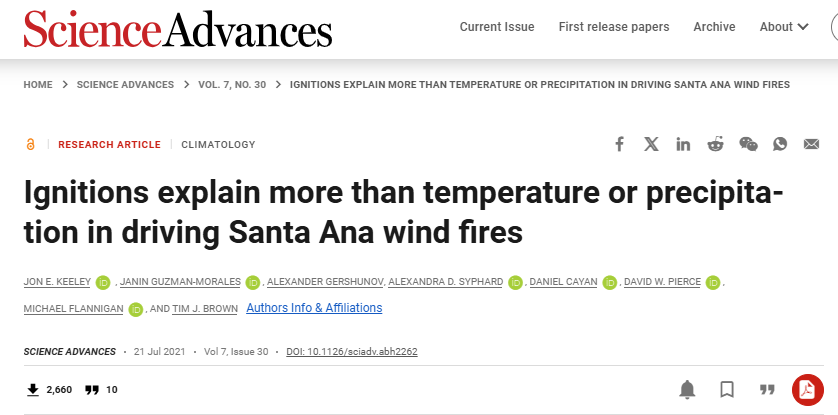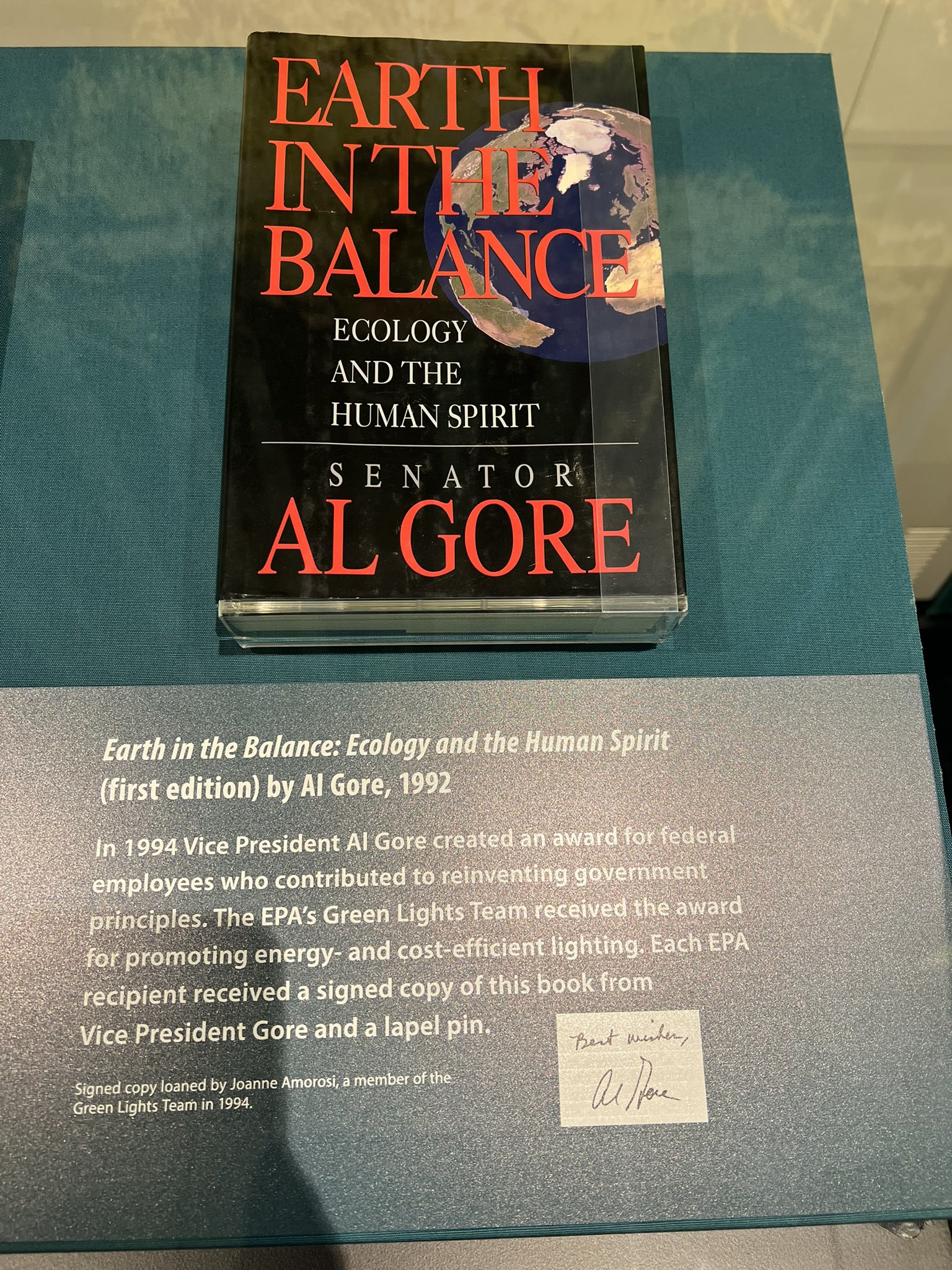Wildfires:
2021 Study found: ‘100% of all [Santa Ana] fires are the result of human ignitions, either intentionally or accidentally’ –
Study found ‘higher temperatures’ & ‘precipitation…did not appear to play a substantial role’ in fires

Morano: Climate Change Activists: ‘Weaponizing Every Weather Event’
‘The climate we now have’ is no different from the climate of the past
California conflagration is not a natural disaster, but Gavin Newsom’s disaster
“The ‘wildfire problem’ is essentially more a social than a natural one.” Researchers from the Universidad Carlos III de Madrid found that “climate change” is not to blame for increased forest fires in the Mediterranean basin.”…
“In the United States, wildfires are also due in part to a failure to thin forests or remove dead and diseased trees.
Pielke Jr.: “The IPCC has not detected or attributed fire occurrence or area burned to human-caused climate change
Globally, emissions from wildfires has decreased globally over recent decades, as well as in many regions
Canada wildfire trends show no increase in recent decades
Wildfires used to be much more extensive in past centuries
Wildfires are a part of the natural eco-system.”
Lomborg on Global wildfires: For more than two decades, satellites have recorded fires across the planet’s surface. The data are unequivocal: Since the early 2000s, when 3% of the world’s land caught fire, the area burned annually has trended downward. In 2022, the last year for which there are complete data, the world hit a record low of 2.2% burned area…The latest report by the United Nations’ climate panel doesn’t attribute the area burned globally by wildfires to climate change. Instead, it vaguely suggests the weather conditions that promote wildfires are becoming more common in some places. Still, the report finds that the change in these weather conditions won’t be detectable above the natural noise even by the end of the century. …
America wildfires: While the complete data aren’t in for 2023, global tracking up to July 29 by the Global Wildfire Information System shows that more land has burned in the Americas than usual. But much of the rest of the world has seen lower burning — Africa and especially Europe. Globally, the GWIS shows that burned area is slightly below the average between 2012 and 2022, a period that already saw some of the lowest rates of burned area.
Australian Wildfires: Likewise, while Australia’s wildfires in 2019-20 earned media headlines such as “Apocalypse Now” and “Australia Burns,” the satellite data show this was a selective narrative. The burning was extraordinary in two states but extraordinarily small in the rest of the country. Since the early 2000s, when 8% of Australia caught fire, the area of the country torched each year has declined. The 2019-20 fires scorched 4% of Australian land, and this year the burned area will likely be even less.
When reading headlines about fires, remember the other climate scare tactics that proved duds. Polar bears were once the poster cubs for climate action, yet are now estimated to be more populous than at any time in the past half-century. We were told climate change would produce more hurricanes, yet satellite data shows that the number of hurricanes globally since 1980 has trended slightly downward.
Fire Sprinklers Erupt from Ingeniously Camouflaged Huts to Protect a Historic Japanese Village

Here is President Trump three months ago on the famous Joe Rogan episode talking about how California refuses to build water reservoirs and manage their forests to prevent wildfires. pic.twitter.com/o5gUSkXexh
— Greg Price (@greg_price11) January 8, 2025




